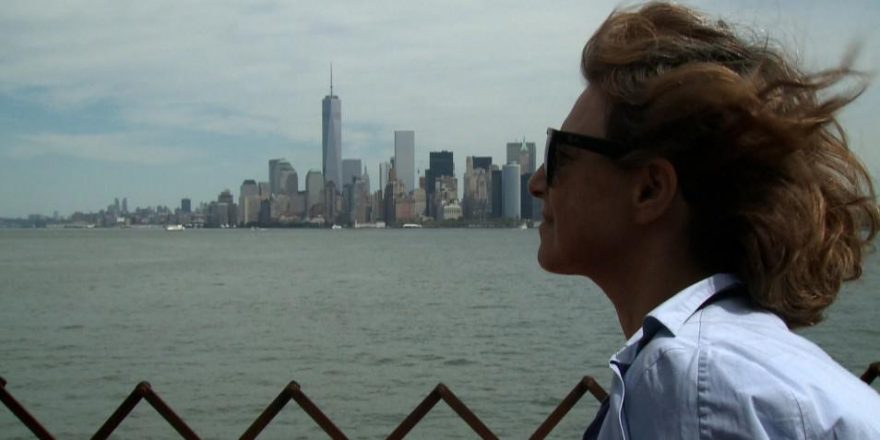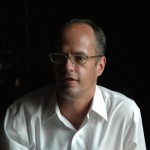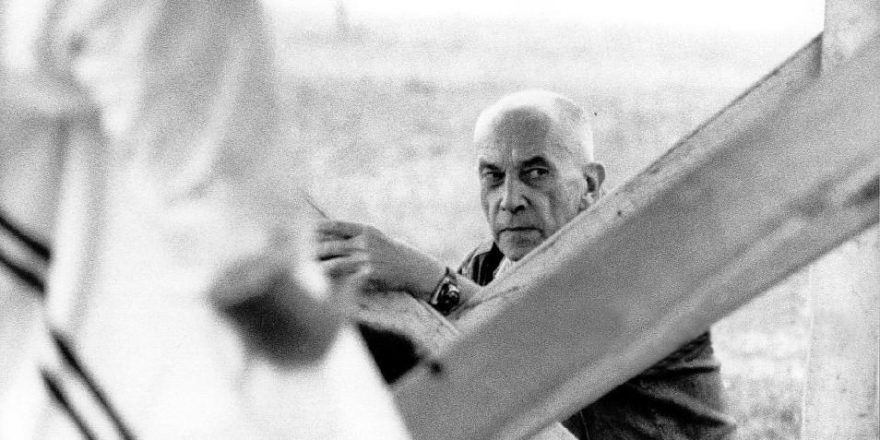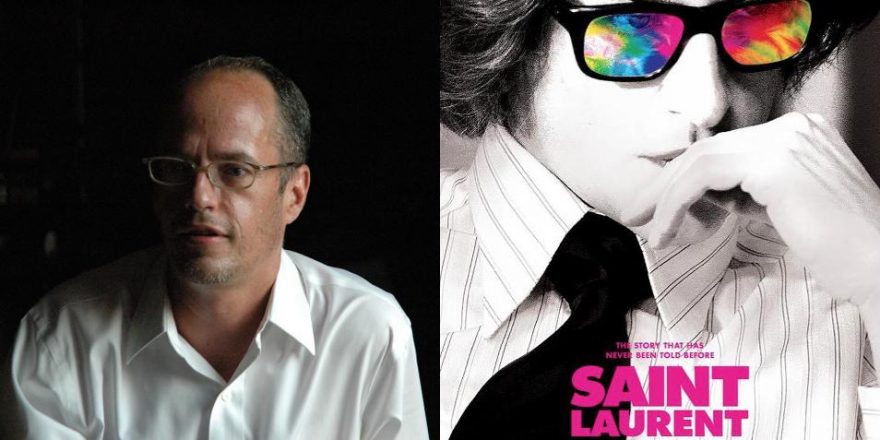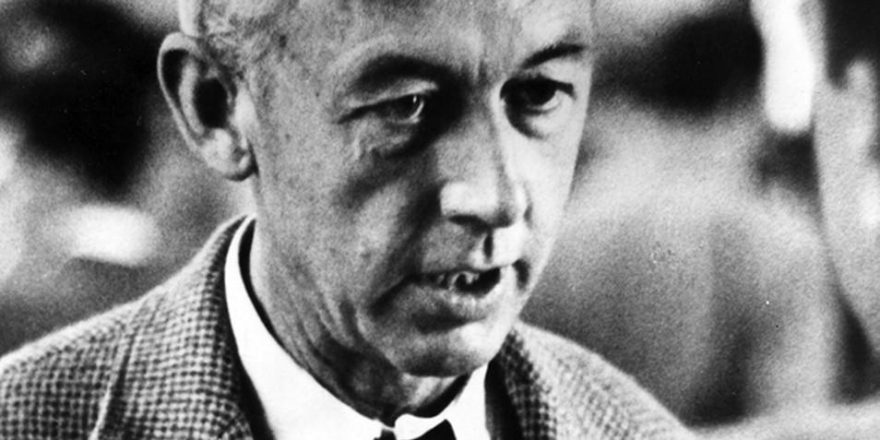“The pace is necessary not just to tell the story, but also to make you feel it, in your bones, in your flesh, in your heart.” – Chantal Akerman
“Beckett has actually discovered a new dramatic subject. Normally people on the stage reflect on the macrostructure of action. What am I going to do this year? Tomorrow? Tonight? They ask: Am I going mad? Will I ever get to Moscow? Should I leave my husband? Do I have to murder my uncle? My mother? These are the sorts of large projects, which have traditionally concerned a play’s leading characters. Beckett is the first writer to dramatize the microstructure of the action. What am I going to do one minute from now? In the next second? Weep? Take out my comb? Stand up? Sigh? Sit? Be silent? Tell a joke? Understand something?” – Susan Sontag
Dropping out of film school after just a few months to make her audacious debut short Saute ma ville (resourcefully funded by trading diamond shares on the Antwerp stock exchange), the late Chantal Akerman moved to New York City in 1971, the year she turned 21. She soon immersed herself in the overlapping worlds of experimental film, avant-garde dance, performance and art; later she spoke of the revelatory impact of screenings at Anthology Film Archives where the work of Michael Snow, Yvonne Rainer, Jonas Mekas and Andy Warhol suggested new ways to inhabit time and helped point the way to her durational and diaristic films. Unlike cinematic seducers like Hitchcock who erase time, encouraging you to get lost in the dark, Akerman often chose to provoke her audience with great subtlety and existential finesse: “What I want is to make people feel the passing of time.”
Marianne Lambert’s new documentary I Don’t Belong Anywhere: The Cinema of Chantal Akerman weaves together interviews of its nimble, eloquent subject filmed in New York, Paris, Brussels and Tel Aviv with excerpts from Akerman’s many films. Its slim 67-minute running time limits the film’s range but the absorbing interviews add depth and intimacy. (I wasn’t surprised to discover that Lambert previously worked with Akerman as a production manager.) Akerman’s engaging voice and on-screen presence, a familiar presence from so much of her work, anchor our experience. Lambert stages the interviews in sharply contrasting settings – a sunny, anodyne hotel room, an editing room, or perched on a hulking metal sculpture in the Israeli desert – and this associative approach allows the film to avoid too-neat chronological biography and reflects Akerman’s choice of a nomadic life.
Working nights in the ticket booth of a gay porn theater in those early Seventies years, Akerman skimmed off the top, selling each ticket twice. She eventually used the profits to finance her films La chambre and Hotel Monterey (which she described as ”an experience of viewing, not a documentary”). Her 1976 film News from Home (filmed by gifted collaborator Babette Mangolte, who also shot Jeanne Dielman, 23, Quai du Commerce, 1080 Bruxelles) captures a now long-vanished New York. This quietly devastating work combines unblinking long takes of the streets and subways with Akerman’s off-screen voice reading from letters written by her mother Natalia (known as “Nelly”), who was an enduring and profound influence on her art.
In I Don’t Belong Anywhere, Akerman talks about the moment of discovery that led to making News From Home. “When I was on the plane and about to land in New York, I could see New York and this hugeness. And these letters describing sickness, and my little sister who had or hadn’t passed her exams, my father who was worried about his business and so on. This small, little life. A life like any other. And at the same time I would see New York. And in one second I had the idea of making a film about New York with the letters as voiceover.” Akerman finds extraordinary beauty in the everyday, interweaving public and private, one space exterior and visible, the other interior, imagined. Sometimes the roar of the subway or clatter of the streets erases her voice entirely.
Lambert makes compelling use of an interview with actress Aurore Clément, the star of Les rendez-vous d’Anna, particularly in her rueful anecdote of ignoring Delphine Seyrig’s warning not to attend the premiere, only later to have to be rescued from a hostile crowd, booing their displeasure at the implacable, observational coolness of the film. In our relatively shockproof culture, it’s amazing to think of this sort of convulsive audience reaction: shades of an earlier era, like the riot after the premiere of Stravinsky’s The Rite of Spring.
In her singular, indelible Jeanne Dielman, Akerman makes a miracle: somehow despite (or maybe because of) the empirical, patient eye of the camera, observing each domestic chore, the film manages to convey something sublime, spiritual, invisible. All while remaining maddeningly, beautifully, hypnotically concrete. Akerman describes Jeanne as living in “a world of confinements and repetitions,” and in an interview movingly worries how her mother experienced the film, if she felt it was unkind: “I knew she understood it but I don’t know how she felt about it.”
Gus van Sant appears briefly here to discuss the impact of Akerman’s films on his own, citing the influence of the frontal, planar camera placement of Jeanne Dielman on his work with cinematographer Harris Savides in Last Days. Akerman’s austere yet intimate frontality evokes, for me, the paintings of Piero della Francesca, especially in Je tu il elle as we watch lovers tumble, kissing and grasping on the narrow shelf of a bed.
Akerman is rueful and funny on the subject of her one big-budget film, the improbably comedic A Couch In New York, starring Juliette Binoche and William Hurt. She unflinchingly describes the showdown of wills after Hurt indulged in a seven-minute improvisation (“I’d rather you were unhappy than me”) and how her reminder to him of the precise comedy of the script initially evoked frosty, combative behavior. But after the dark cloud passed, Akerman says Hurt was “as gentle as a lamb.” Not so the critics and audiences, who stayed away from this neither-this-nor-that example of her work.
Her final film, No Home Movie, is a portrait of her mother intimately filmed by Akerman herself, working without a tripod, using tables to support her camera and finding exquisite and ordinary tableaux with which to unfold her mother’s world. There’s a paradoxical combination of notational documentary and aestheticized narrative (“As soon as you frame something, it’s narrative”). Despite Akerman’s intention to get her mother to talk about the devastation of Auschwitz and the death of both her parents there, she succeeds instead in capturing lively, teasing conversation about a past affair, or the shifting importance of Judaism in both women’s lives.
One moment in Lambert’s film took my breath away. Akerman, devastating in her lack of self-pity, comments about her worries over whether or not she has another film to make: “Now that my mother is no longer there, there is nothing left.”
FIN



